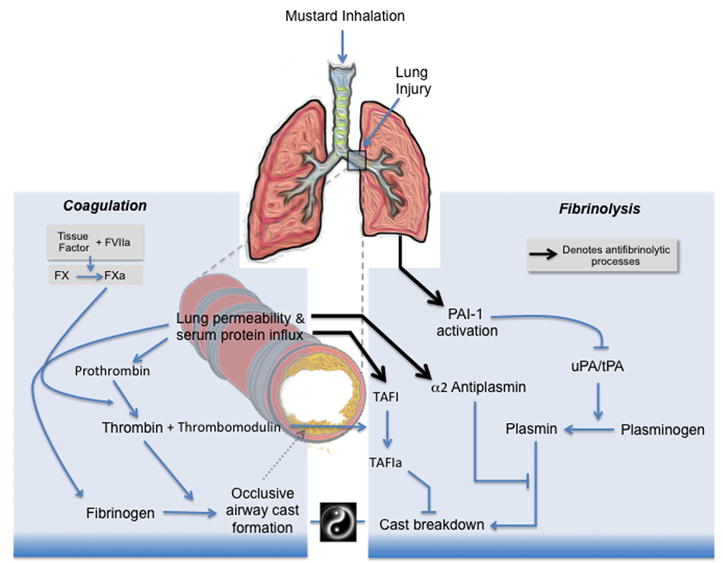Figure 2.

Schematic representation of the initiation of coagulation and recruitment of fibrinolytic inhibitors following mustard inhalation. Mustard inhalation causes lung injury, which facilitates leakage of serum proteins into airways. The presence of airway tissue factor initiates clotting of serum-derived coagulation factors, leading to nascent fibrin cast formation. Plasmin-dependent fibrinolysis is the physiologic mechanism for removal of airway casts and restoration of airway patency. Mustard injury also gives rise to elevated airway levels of antifibrinolytic molecules, which collectively inhibit the plasminogen-activation pathway. Simultaneous involvement of procoagulant and antifibrinolytic pathways within the airways can tip the balance toward cast accrual, leading to impaired gas exchange and respiratory failure.
